SILVANA MOSSANO
Reportage udienza del 17 gennaio 2022
Alla Conferenza mondiale dell’Accademia delle Scienze di New York, nel 1964, e nella successiva pubblicazione degli atti avvenuta nel 1965, trovò conferma ufficiale e condivisa nel mondo scientifico che l’amianto causa il mesotelioma. Ma proprio tutti gli scienziati dell’epoca erano d’accordo? Non è che la convinzione di qualcuno di loro fosse mitigata dall’avverbio «perhaps», forse?
E tutti quei 392 casi – 392 identità di uomini e donne elencate nel capo di imputazione del processo Eternit Bis, della cui morte deve rispondere l’imprenditore Stephan Schmidheiny – furono davvero decessi causati dal mesotelioma? Perché, laddove manchi l’esito di un’indagine immunoistochimica, non è proprio certo che… forse sono diagnosi imprecise… magari sono morti d’altro…
Senza contare che non è detto che abbiano respirato proprio le fibre d’amianto diffuse dall’Eternit di Casale, la società di cui, in Italia, e in più luoghi del mondo, fu a capo Schmidheiny dal 1976 al 1986. In giro ci sono così tanti edifici con tetti d’amianto: capannoni industriali e artigianali, scuole, ospedali, case, garage, pollai. Chi può dire che – per rimanere nello specifico sul caso del processo – quei 392 casalesi non abbiano respirato invece le fibre sprigionate da coperture un po’ vetuste, degradate, non curate con adeguata manutenzione…
I difensori dell’imputato – gli avvocati Astolfo Di Amato e Guido Carlo Alleva – si applicano, preparatissimi e con meticolosità chirurgica, a smontare le tesi scientifiche esposte dai consulenti tecnici della procura e delle parti civili, già esaminati nelle udienze precedenti. Lunedì 17 gennaio, i difensori hanno completato il controesame della patologa genetista Irma Dianzani, nominata dai pm Gianfranco Colace e Mariagiovanna Compare, del medico del lavoro Pietro Gino Barbieri e dell’anatomopatologo Mauro Giulio Papotti (consulenti incaricati da più legali di parte civile) oltre che del medico del lavoro Edoardo Bai, consulente di Medicina Democratica.
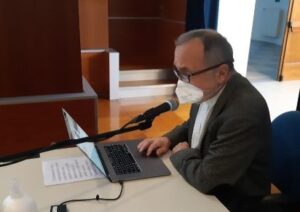
CORRELAZIONE TRA AMIANTO E MESOTELIOMA
«Per la prima volta nel 1965 viene affermata la correlazione tra amianto e mesotelioma» esordisce l’avvocato Di Amato. Proprio la prima volta no, puntualizza il dottor Barbieri: «C’erano molte evidenze già negli anni precedenti, confortate da diversi lavori scientifici». Poi si arriva alla Conferenza di New York, a cui partecipano centinaia di esperti americani, europei tra cui italiani, australiani, sudafricani, e si fa il punto della situazione. Sono tutti d’accordo: l’amianto causa il mesotelioma.
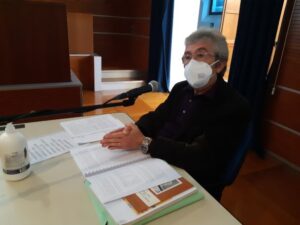
Ma da un documento scritto da Irvin Selikoff, considerato tra i maggiori divulgatori della tesi sulla correlazione amianto – mesotelioma, il legale spulcia una parolina inglese, «perhaps», che vuol dire «forse»: magari, azzarda Di Amato, pure lui tutta questa certezza non l’aveva. Anzi, aggiunge il difensore, una decina di anni dopo, nel testo «Asbestos and disease» Selikoff pare conservare delle perplessità. Come mai?, interroga il legale di Schmidheiny.
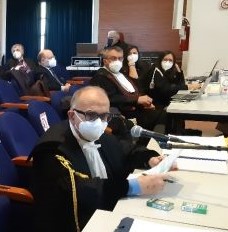
«C’erano delle perplessità – assentisce Barbieri -, ma – precisa senza esitazione – non certo sulla correlazione tra amianto e mesotelioma, bensì sulla patogenesi, cioè sui meccanismi che determinano lo sviluppo del mesotelioma, cioè su come la fibra inerte di un minerale generi la malattia». Sulla relazione causa – effetto, invece, non c’erano titubanze, «tanto è vero che il mesotelioma veniva già all’epoca considerato “tumore sentinella”: laddove si riscontravano casi di quel tumore, voleva dire che lì, più o meno nascosta, c’era presenza di amianto».
Ma l’Inail, incalza il legale, lo riconosce come malattia professionale soltanto tre decenni dopo, negli anni Novanta… «Se l’Inail l’ha recepito in ritardo lascia sconcertati, ma non sorprende, è capitato anche per altre malattie professionali».
DIAGNOSI DUBBIE SENZA ISTOCHIMICA?
Le indagini istochimiche, raffinate pratiche diagnostiche che si sono affermate e via via perfezionate negli ultimi 20-25 anni, rappresentano uno dei tasti su cui la difesa si sofferma maggiormente. Gli avvocati Di Amato e Alleva sono molto ferrati, non soltanto sulla materia in generale che avevano già avuto modo di studiare e approfondire per il maxiprocesso Eternit Uno, in cui era contestato il disastro doloso permanente, ma sugli specifici casi di morte oggetto, ora, dell’Eternit Bis. Il procedimento si celebra a Novara in Corte d’Assise perché il reato contestato è l’omicidio volontario con dolo eventuale.
Dimostrano di conoscere nel dettaglio le 392 schede personali delle vittime indicate nel capo d’imputazione: richiamano i loro nomi, distinguono con precisione le diverse forme della loro malattia (mesotelioma epitelioide, sarcomatoide, bifasico…) e sono informati sul dipanarsi delle loro esistenze, dove hanno vissuto, che lavori hanno svolto, se hanno allattato con il grembiule imbiancato di polvere, se hanno avuto genitori e fratelli e figli, e persino se avevano il garage con il tetto d’amianto o i bordi delle aiuole del giardinetto delimitate da scampoli di lastre ondulate di eternit.
Interrogano, caso su caso, dettaglio su dettaglio e, pur mantenendo un tono pacato, affondano la lama del dubbio: sono morti di mesotelioma?
«Devono difendere, fanno il loro mestiere» si sente mormorare nell’aula magna universitaria dove si celebra il processo. Ed è con questa sofferta giustificazione che si tenta di soffocare o attutire il miscuglio di dolore e indignazione che stringe lo stomaco quando si sente mettere in dubbio le diagnosi.
«Prendiamo il caso numero… – citano i legali – la signora Tal dei Tali… che ha vissuto in via… come si fa a essere certi che si sia ammalata proprio di mesotelioma? Manca, nella cartella clinica, l’indagine immunoistochimica ritenuta, secondo alcuni autorevoli manuali, “essenziale” per definire la natura mesoteliale della malattia». Senza l’utilizzo della tecnica immunoistochimica – sostengono i difensori (preannunciando le argomentazioni dei loro consulenti, che saranno esaminati più avanti) – resta il dubbio che si sia ammalata proprio di mesotelioma e non, invece, di un altro tumore primario, magari proliferato successivamente in metastasi alla pleura o al peritoneo.
Il ragionamento è: dando come assunto che l’amianto causa il mesotelioma, se la vittima non si è ammalata di mesotelioma ma di un altro tumore primario, allora non si può attribuire quella morte all’imputato, cui si contesta la diffusione indiscriminata di fibre d’amianto, appunto.
Quindi, i casi in cui gli accertamenti immunoistochimici non ci sono, vanno depennati dall’elenco?
Ma, allora, quali accertamenti immunoistochimici sono da ritenere validi? Soltanto alcuni anni fa, le procedure utilizzate per svolgere queste indagini non erano sofisticate come quelle ora a disposizione.
«Come anatomopatologo – replica il professor Papotti – considero l’immunoistochimica importante e la faccio, certo, ma vi garantisco che un patologo esperto non ha bisogno dell’immunoistochimica per diagnosticare la maggior parte dei mesoteliomi. Naturalmente, deve conoscere anche le condizioni cliniche del paziente e gli esiti degli accertamenti radiologici già fatti, soprattutto la Tac».
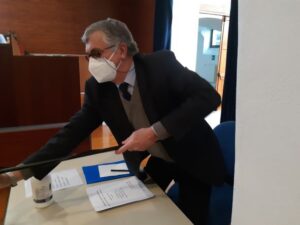
«La stessa radiografia al torace – incalza Barbieri –, pur non essendo lo strumento diagnostico del mesotelioma, raramente viene smentita: se il radiologo scrive “lesione compatibile con il mesotelioma” difficilmente sbaglia».
«Lesione compatibile» e ti senti già morire. Quante volte si è scongiurato e pregato affinché questa frase, stampata sul foglio di accompagnamento infilato nella busta gialla contenente le lastre, fosse un errore, una svista rimediabile.
Ma l’avvocato Alleva insiste: «Gli studi di concordanza (cioè la riverifica delle diagnosi effettuata a posteriori) hanno evidenziato delle discrepanze: è attestato dalla letteratura scientifica internazionale ed è capitato, ad esempio, nel processo per morti d‘amianto alla Olivetti di Ivrea». In sostanza, alcune diagnosi di mesotelioma, rifatte ampliando le indagini immunoistochimiche così come è possibile oggi, sono state rivalutate e hanno dimostrato che la neoplasia avrebbe potuto avere un’altra origine, come ad esempio un tumore al polmone, o all’ovaio, etc.
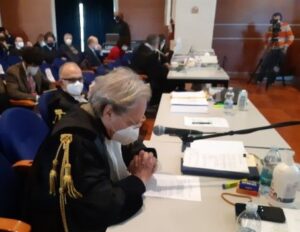
I consulenti ribadiscono: «L’immunoistochimica è una tecnica raccomandabile – conferma Barbieri – e tutte le volte che si può fare ben venga, ma non è decisiva: si può fare la diagnosi anche senza. Se si dovesse pretendere solo quella, dovremmo cassare tutte le diagnosi precedenti gli anni Novanta». Inoltre, Barbieri cita un proprio studio (coautore: Dario Mirabelli) su oltre 170 casi di mesotelioma di cui si disponevano anche gli esiti dell’autopsia. Tranne che in un paio, le autopsie confermarono inequivocabilmente le diagnosi di mesotelioma fatte in vita talora anche senza immunoistochimica.
L’ESPOSIZIONE PIÙ RILEVANTE
L’avvocato Di Amato porta all’attenzione, tra gli altri, il caso di una donna che dal 1935 in poi è vissuta a Casale, non distante dallo stabilimento Eternit. «La signora ha subito esposizioni importanti dal 1935 al 1976; perché – interroga il legale – dovrebbero essere rilevanti quelle successive al 1976?». Il 1976, lo ricordiamo, è l’anno in cui Stephan Schmidheiny assunse legalmente la gestione dell’Eternit, in Svizzera e in altri Paesi, dopo che il padre Max aveva diviso le attività amiantifera e cementifera rispettivamente tra i figli Stephan e Thomas.
Stephan Schmidheiny mantenne la gestione dell’Eternit in Italia, con il maggiore stabilimento a Casale, fino al 1986, quando la società fallì. Ecco perché le contestazioni mosse dalla procura riguardano il decennio ’76-’86: è in questo arco temporale che la Corte dovrà individuare se l’imputato abbia o no responsabilità riguardo a quelle morti d’amianto.
Dunque: se la signora casalese aveva respirato fibre fin dal 1935, che incidenza potevano avere quelle cui fu esposta dopo il 1976? «Tutte le esposizioni sono rilevanti – ribadisce il consulente Barbieri -, tutte concorrono a generare la patologia che è la conseguenza dell’esposizione all’amianto nel suo insieme». Nel caso prospettato, la diagnosi di mesotelioma era stata fatta nel 2010. Tolti i 10 anni precedenti, in cui si può ragionevolmente pensare che la malattia fosse già iniziata anche se non diagnosticata, tutte le esposizioni dal 1935 al 2000 hanno contribuito a causare il tumore.
La patologa genetista Irma Dianzani, sollecitata sul tema più ampio della «origine multiclonale» del mesotelioma, ha richiamato un lavoro scientifico del prof. Michele Carbone, direttore scientifico del Cancer Center di Honolulu (Hawaii, Usa) e ha spiegato che questo tumore origina in più punti della pleura. Quello che al momento della diagnosi sembra un unico tumore è l’insieme di focolai diversi, originati a distanza uno dall’altro, confluiti poi in un unico mesotelioma diffuso.
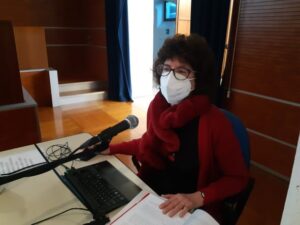
I consulenti della procura e delle parti civili ritengono, dunque, che cercare di individuare un’unica esposizione responsabile non abbia senso.
I TETTI D’ETERNIT
E, a proposito di possibili fonti di esposizione, i difensori puntano il dito, con il solo imbarazzo della scelta, verso le molteplici coperture di amianto: tetti che, per diversi decenni del Novecento, sono stati realizzati con lastre di eternit. Nel tempo, rilasciano fibre che si diffondono ovunque ed eccola lì, bell’e spiegata, secondo la difesa, la cosiddetta «esposizione ambientale». O, almeno, chi può dire che abbiano inciso più le fibre diffuse dallo stabilimento rispetto a quelle svolazzanti dai tetti di fabbriche, case, rimesse e così via?
Replica del dottor Barbieri: «L’Italia, da Bolzano a Catania, è tappezzata di tetti d’amianto: se le coperture fossero così decisive nel provocare il mesotelioma, le mappe che raffigurano l’incidenza dei mesoteliomi avrebbero ben altre colorazioni!». Come aveva mostrato in precedenti udienze l’epidemiologo Dario Mirabelli, già responsabile del Registro Mesoteliomi piemontese, in tali mappe gli ottomila Comuni italiani vengono colorati con un rosso intenso dove c’è maggiore incidenza di tumori (Casale, Broni, Monfalcone, Liguria, ad esempio), il rosso è più diluito, vira sul rosa e si dissolve nel bianco man mano che l’incidenza di casi di mesotelioma diminuisce e si azzera.
Precisa Barbieri: «Quello delle coperture è un pericolo, non un rischio». Ossia: la condizione di pericolo implica la potenzialità intrinseca di causare un danno, mentre il rischio è la stima della probabilità che il danno si verifichi.
«È ragionevole rimuovere le coperture di amianto – afferma – perché, in determinate condizioni, possono diventare un rischio, ma altra cosa è affermare che il rischio per la popolazione italiana consista nell’aver vissuto vicino al tetto d’eternit di un garage». Le colorazioni sulle mappe dimostrano appunto, che la contaminazione si è concentrata nei luoghi dove l’amianto è stato lavorato o dove hanno operato cantieri navali in cui era largamente impiegato.
C’è poi il «polverino» (sfridi provenienti dalla lavorazione dei tubi, per i quali si utilizzava la crocidolite o amianto blu) che, a Casale in particolare, è stato adoperato, tra i cosiddetti «usi impropri», per coibentazioni di sottotetti, per livellamenti di cortili, campetti di calcio, stradine. Il polverino, friabile, uccide. Stermina i bambini di ieri che, sui cumuli di polverino, ci hanno pure giocato.
INTERRUZIONE E RIPRESA
A causa della pandemia che sta attraversando le fasi di picco della quarta ondata, il presidente della Corte d’Assise Gianfranco Pezone, in accordo con le parti, ha deliberato di sospendere le udienze e riprenderle il 16 marzo. Seguiranno quelle già fissate il 21 e il 28, poi il 4 e l’11 aprile. Saranno poi decise le date successive.
I difensori hanno indicato in 10-12 udienze il tempo necessario ad ascoltare un centinaio di testimoni (di cui una novantina di famigliari delle vittime) e i propri consulenti. Quindi, salvo imprevisti, si potrebbe arrivare a concludere l’istruttoria dibattimentale a fine maggio. Poi si concorderanno i tempi per la discussione (requisitoria e arringhe).
In verità, secondo la procedura, mercoledì 16 marzo, prima di procedere oltre, sarebbe stata la data riservata ad ascoltare l’imputato. Ma Stephan Schmidheiny non ci sarà: non intende sottoporsi a interrogatorio, neppure questa volta.
A MENO CHE…
A meno… a meno che ci ripensi. Nel corso dell’esistenza, si imboccano talora strade impensabili e imprevedibili per trovare un incrocio da cui far partire, forse, una qualche sincera possibilità di pacificazione.
* * *
Traduzione di Vicky Franzinetti
Translated by Vicky Franzinetti
January the 17th Eternit Trial Hearing
By Sivana MOSSANO
At the 1964 World Conference of the Academy of Sciences in New York, and in the subsequent proceedings published in 1965, the scientific world officially confirmed that asbestos causes mesothelioma. Did all the scientists of the time agree? Wasn’t the belief of some of them used the adverb ‘perhaps’?
These 392 cases – 392 identities of men and women listed for the Eternit Bis trial, whose death the businessman Stephan Schmidheiny is accused of- are they really deaths caused by mesothelioma? Where the results of an immuno-histo-chemical investigation are missing, can we really … possibly the diagnosis is not accurate…… perhaps they died of something else…
And in any case is it certain that they breathed in the asbestos fibres spread by Eternit in Casale, the company that Schmidheiny headed in Italy and in many other parts of the world from 1976 to 1986. There are so many buildings around with A-C roofs: industrial and craft sheds, schools, hospitals, houses, garages, chicken coops. Who can say that – to remain specific to the case in question – those 392 people from Casale did not breathe in the fibres released by roofs that were a little old, degraded, not properly maintained…
The defence – Lawyers Astolfo Di Amato and Guido Carlo Alleva – applied themselves with the precision of a surgeon to dismantle the scientific arguments listed by the Plaintiffs’ and Prosecution experts examined in the previous hearings. On Monday 17 January, the defence completed the cross-examination of the genetic pathologist Prof Irma Dianzani, appointed by PP Dr Gianfranco Colace and Mariagiovanna Compare, the occupational physician Dr Pietro Gino Barbieri and the pathologist Dr Mauro Giulio Papotti (experts appointed by several plaintiffs’ lawyers) as well as the occupational physician Dr Edoardo Bai, for Medicina Democratica.
THE LINK BETWEEN ASBESTOS AND MESOTHELIOMA
“For the first time in 1965, the link between asbestos and mesothelioma was discovered,” began lawyer Di Amato. Not exactly for the first time, Dr. Barbieri answered: “There was already plenty of evidence in previous years, confirmed by various scientific works”. The New York conference, attended by hundreds of American and European experts, including Italians, Australians and South Africans, took stock of the situation. They all agreed: asbestos causes mesothelioma.
However, a document written by Irvin Selikoff, considered one of the major scientists behind the asbestos and mesothelioma, the lawyer pulls out an English word, “perhaps“, which means “maybe“: perhaps, Lawyer Di Amato ventured, even he was not so sure and added that about ten years later, in the text “Asbestos and disease” Selikoff seemed to retain doubts. Why ?” asked Schmidheiny’s lawyer.
Dr Barbieri said: “There were doubts, but certainly not about the correlation between asbestos and mesothelioma, but about pathogenesis, i.e. the mechanisms that determine the development of mesothelioma, how the inert fibre of a mineral generates the disease. There was no hesitation on the cause-effect relationship, ‘so much so that mesothelioma was already considered a “sentinel tumour” at the time: where there were cases, it meant that there was asbestos’.
The defence lawyer insists that INAIL (The National Workers’ Compensation Body) did not recognise it as an occupational disease until three decades later, in the 1990s… ‘If INAIL was late in accepting it, – said Barbieri – it’s baffling, but not surprising, as it has happened with other occupational diseases’.
UNCERTAIN DIAGNOSES WITHOUT HISTOCHEMISTRY?
Histo-chemical investigations, a sophisticated diagnostic practice established and gradually perfected over the last 20 to 25 years, is one of the keys defence arguments. Lawyers Di Amato and Alleva were very well prepared, not only on the subject in general, which they had already studied in depth for the Eternit One maxi-trial, in which a permanent wilful disaster was the count, but on the specific cases of death which are now the subject of Eternit Bis. […].
The defence lawyers displayed a detailed knowledge of the 392 personal files of the victims: they remembered the victims’ names, can identify with precision the different forms of their disease (epithelioid mesothelioma, sarcomatoid, biphasic…) in each victim, and are informed about the victims’ lives, where they lived, what jobs they held, whether they breast-fed with their dust covered aprons, whether they had parents and siblings and children, and even whether they had a garage with an asbestos roof or the edges of their garden beds bordered by remnants of corrugated asbestos sheets.
They question, case after case, detail after detail and, while maintaining a calm tone, they raise the blade of doubt: did they die of mesothelioma?
“They have to defend, they’re doing their job,’ as some murmured in the university auditorium where the trial is being held. This is the painful justification to try and stifle or dampen the mixture of pain and indignation that clutches at the people of Casale listening when they hear doubts about the diagnoses.
“Let’s take case number … – the lawyers quoted – Mrs. So-and-so … who lived on street … how can we be sure that she actually suffered from mesothelioma? The medical records do not include immuno-histo-chemistry, which, according to some authoritative handbooks, is considered “essential” to define the mesothelial nature of the disease. Without the use of the immuno-histo-chemical technique,” the defence lawyers maintain (announcing the arguments of their consultants, which will be examined later), “the doubt remains that she developed mesothelioma and not, instead, with another primary tumour, which may have subsequently proliferated in metastases to the pleura or peritoneum”.
The argument is: assuming that asbestos causes mesothelioma, what if the victim did not suffer from mesothelioma but from another primary tumour, then the death cannot be attributed to the defendant, who is accused of the indiscriminate spread of asbestos fibres. Should the cases in which immuno-histo-chemical tests are not available be delisted? And which immuno-histo-chemical tests are to be considered valid? Only a few years ago, the procedures used to carry out these investigations were not as sophisticated as those now available. “As a pathologist,’ replied Professor Papotti, ‘I consider immuno-histo-chemistry important and I use it, of course, but I can assure you that an expert pathologist does not need such tests (immuno-histo-chemistry) to diagnose most mesotheliomas. Of course, a pathologist also needs to know the patient’s clinical condition and the results of past and present X-rays and any CT scan”. Dr Barbieri added, “Although X-rays are not the diagnostic tool for mesothelioma, they are rarely wrong: if the radiologists write “lesion compatible with mesothelioma” they are hardly ever wrong.
When the radiologists write “lesion compatible with mesothelioma” they are hardly ever wrong. How many times have we prayed that these words, printed on the accompanying sheet slipped into the yellow envelope containing the x-rays, was a mistake, an oversight that could be corrected.
Defence Lawyer Alleva insists: ‘Concordance studies (i.e., the re-verification of diagnoses carried out ex-post or retrospectively) have revealed mismatches: this is attested by international scientific literature and happened, for example, in the trial for asbestos-related deaths at Olivetti in Ivrea. Basically, some mesothelioma diagnoses, re-diagnosed by using immuno-histo-chemical tests as is possible today, were re-classed and showed that the neoplasia could have had another origin, such as a lung or ovarian tumour.
The plaintiffs’ and PP’s experts answered: ‘Immuno-histo-chemistry is recommended,’ Barbieri confirms, ‘and as often as possible, it is welcome, but it is not decisive: a diagnosis can be made without it. If that’s all that was required, we’d have to get rid of all diagnoses before the 1990s. In addition, Barbieri cited his own study (co-authored with Dr Dario Mirabelli) on more than 170 mesothelioma cases for which autopsy results were also available. Except in a couple of cases, the autopsies confirmed the diagnoses of mesothelioma made during the victim’s life, at times with no immuno-histo-chemical tests.
THE MOST RELEVANT EXPOSURE
Among others, defence Lawyer Di Amato brings the case of a woman who lived in Casale, not far from the Eternit plant from 1935 onwards. “The woman suffered significant exposure from 1935 to 1976; why – asks the lawyer – should those after 1976 be relevant?”. In 1976, Stephan Schmidheiny legally took over the management of Eternit, in Switzerland and in other countries, after his father Max had given the asbestos business to his son Stephan and the cement business to the other son, Thomas.
Stephan Schmidheiny owned and managed Eternit in Italy, with the largest plant in Casale, until 1986, when the company went bankrupt. This is why the charges brought by the prosecution concern the 1976-1986 decade: it is in this time frame that the Court will have to identify whether or not the defendant is responsible for any or all those asbestos related deaths.
If the woman from Casale had breathed in fibres since 1935, what impact could those to which she was exposed after 1976 have had? “All the exposures are relevant – said the expert Dr Barbieri – all contribute to generating the disease that is the consequence of exposure to asbestos as a whole. In the case under consideration, the diagnosis of mesothelioma was made in 2010. Leaving aside the previous 10 years, when it can be reasonably assumed that the disease had already begun even if not diagnosed, all the exposures from 1935 to 2000 contributed to the tumour.
Genetic pathologist Prof Irma Dianzani was asked about the broader issue of the ‘multi-clonal origin’ of mesothelioma, referred to a scientific paper by Professor Michele Carbone, scientific director of the Honolulu Cancer Center (Hawaii, USA), and explained that this tumour originates in several places in the pleura. What appeared to be a single tumour at the time of the diagnosis was a collection of different foci, originating at a distance from each other, which then merged into a single diffuse mesothelioma.
The PP’s and plaintiffs’ expert witnesses believe that trying to identify a single responsible exposure makes no sense.
ASBESTOS (A-C) ROOFS
As regards possible sources of exposure, the defence is spoilt for choice, as point their finger, at the many asbestos roofs: roofs that, for several decades of the twentieth century, were made of Eternit A-C sheets. Over time, they release fibres that spread everywhere and there it is, well and truly explained, according to the defence, the so-called ‘environmental exposure’. At least, who can say that the fibres spread by the plant had a greater effect than those flying from the roofs of factories, houses, sheds and so on?
Dr Barbieri replied: ‘Italy, from Bolzano (in the north) to Catania (in Sicily), is literally covered in asbestos roofs: if the A-C roofs had played such a decisive role in causing mesothelioma, the maps showing the incidence of mesotheliomas would be coloured very differently! As epidemiologist Dr Dario Mirabelli, former head of the Piedmontese Mesothelioma Registry, had shown in previous hearings, in these maps the 8,000 Italian municipalities are coloured bright red where there is a higher incidence of tumours (Casale, Broni, Monfalcone, Liguria, for example), the red is lighter, turning pink and turning to white as the incidence of mesothelioma cases decreases and disappears. Dr Barbieri pointed out: “Roofing is a danger, not a risk”. In other words: the condition of danger implies the intrinsic potential to cause damage, while risk is an estimate of the probability of damage occurring. It is reasonable to remove asbestos roofs,” he said, “because under certain conditions they can become a risk, but it is another thing to say that the risk for the Italian population consists of living near the asbestos roof of a garage. The colours on the maps show precisely that contamination has been concentrated in places where asbestos has been worked or where shipyards where it was widely used have operated”.
Then there is the dust’ (from the processing of pipes, for which crocidolite or blue asbestos was used) which, in Casale in particular, was used, among the so-called ‘improper uses’, for insulating attics, levelling courtyards, football pitches and streets. Dust, which is friable, kills. It exterminates the children of yesterday, who just played on the dust heaps.
INTERRUPTION AND RECOVERY
Due to the rising Covid numbers (fourth wave), the Chief Justice of the Court of Assize, Dr Gianfranco Pezone, in agreement with the parties, decided to suspend the hearings and resume them on March the 16th . This will be followed by those already scheduled for the 21st and the 28th , then the 4th and the 11th of April. Subsequent dates will then announced later.
The defence has indicated that it needs 10 to 12 hearings to hear about 100 witnesses (including about 90 of the victims’ families) and their own experts. Therefore, excluding unexpected events, the preliminary hearings could be over by the end of May. Then the dates for the closing speeches will be decided.
According to procedure, the defendant Stephan Schmidheiny should have been heard on Wednesday the 16th of March, before proceeding but he won’t be there: he has no intention to submit to questioning, not even this time…
UNLESS…
Unless… unless he were to reconsider. In the course of one’s life, one sometimes takes unthinkable and unexpected paths at a crossroad, seeking a sincere inner peace.

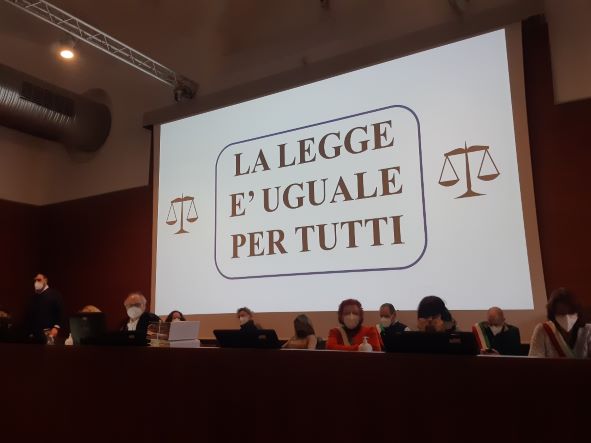

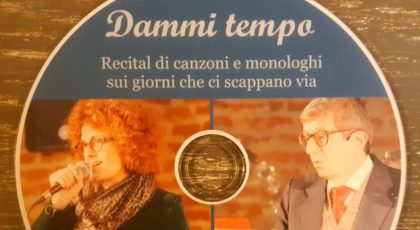

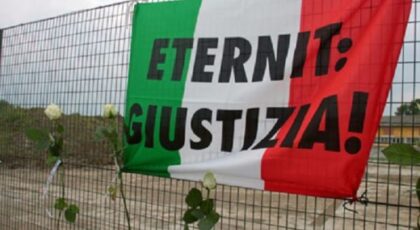
Impeccabile, efficace ed appassionata cronaca di una udienza nella quale non c’è stato rispetto per le vittime
‘una qualche sincera possibilità di pacificazione’
Se ci fosse davvero un’ammissione di responsabilità per il passato e un’assunzione di nuove responsabilità per trovare una cura, per restituire alla collettività e alle famiglie quanto hanno perso almeno dal punto di vista economico, si potrebbe guardare al futuro col cuore più leggero.
Non si cancellerebbe il dolore, rinnovato ad ogni udienza, ad ogni dubbio per noi assurdo, ma ci sarebbe la conferma della possibilità di un cambiamento per l’intera umanità.
Se ci fosse.
Grazie, Silvana, per la condivisione di questa tua caparbia esigenza di uno spiraglio di positività